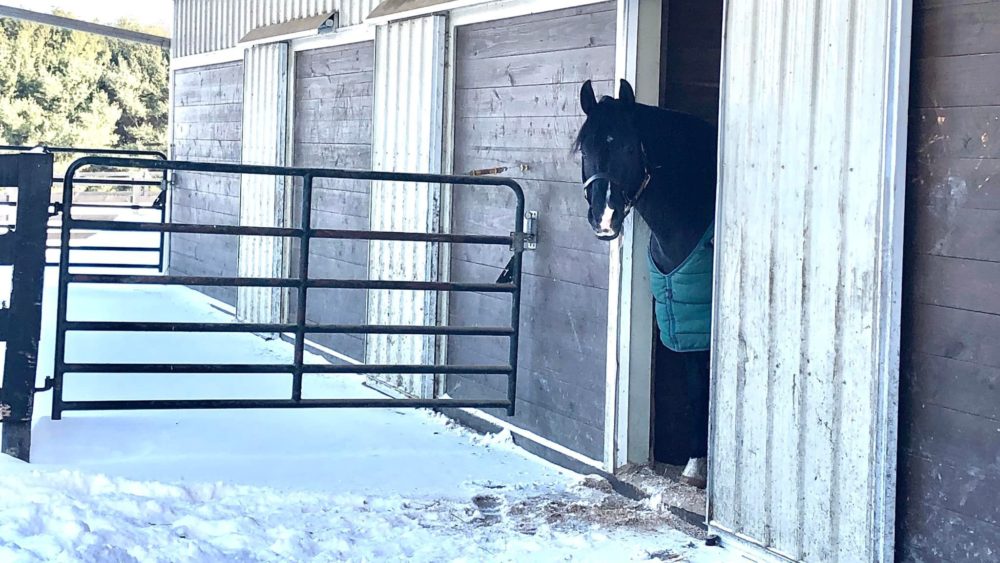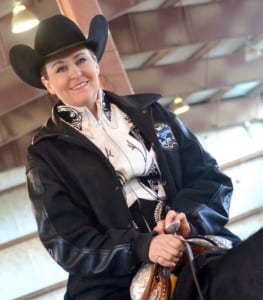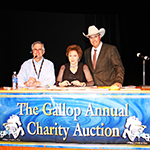Let’s face it, it’s hard to be motivated to ride when it’s cold out. When the weather is a balmy 75 degrees, and the sun is shining, it’s a no-brainer. But in the middle of winter, when the wind is blowing, and you need multiple layers just to try to avoid turning into a human popsicle, riding becomes a little less fun.
We spoke with Melissa Shetler (Circle M Training Center) and Adam Winter (Winter Performance Horses), two top trainers with experience working in harsh winter conditions, to get their tips on ways to keep you and your horse in good condition, despite the cold.
Perhaps one of the biggest struggles to keeping up with riding in the winter is actually getting out the door.
Shetler finds that it is easier for her clients to commit to riding in the winter when they make a clear plan to meet and accomplish a certain skill.
“I’ve found that it is harder to avoid riding when you make a plan for it. If you say you will ride when the weather is good, you may find you don’t get to the barn for months. But if you make a riding plan with another person (either a trainer or friend) where you need to be at the barn on a specific day at a certain time, you are far more likely to follow through.”
Winter recommends going to the barn prepared, which keeps you comfortably warm for the conditions. “Wear lots of comfortable layers and comfy, insulated boots so that you can stay warm. It’s hard to commit to a plan to go to the barn if you’re physically uncomfortable.”
Short, Targeted Lessons
Poor weather conditions certainly limit the human and equine ability to tolerate extended lessons and all-day barn activities. Indeed, you don’t want your horse to get too sweaty in cold conditions, as that can cause more physical damage than good.
“When it’s really cold, I will make a 20-minute riding plan with my horses because I know that’s an amount of time we can both tolerate,” Shetler explains. “I will set out to accomplish one thing, like trail pole work, or pivots, or something that we can accomplish quickly after our warm up.”
In order to ensure the lessons stay short and sweet, Stetler will often use these brief lessons to reinforce existing skills instead of trying to introduce a new skill to the horse, which often takes more time to ensure they learn it properly.
Winter advises you to plan for the harsh conditions well in advance. He recommends you, “Set some goals in the fall for things you can reinforce or work on over the winter, so that you can make these lessons brief and to the point, while still being meaningful and supportive of your goals for the coming year.”
Groundwork
Groundwork is another easy way to get your horse moving while reinforcing their manners and skills.
“Nothing warms a person up quite like showmanship trotting,” Shetler laughs. “And the horses can even keep their blanket on while you’re practicing, so they stay warm.”
 “You can never do enough groundwork,” Winter admits. “If the weather conditions for riding are poor, you will never regret putting in more time on the ground working on leading, tying, or basic showmanship maneuvers.”
“You can never do enough groundwork,” Winter admits. “If the weather conditions for riding are poor, you will never regret putting in more time on the ground working on leading, tying, or basic showmanship maneuvers.”
Winter adds, “Just because you may not be able to ride, that doesn’t mean you can’t keep your horse in the training mentality. They still need to be respectful and have some semblance of routine. It is easy to fall out of routine, but it’s really important to your horse’s mental health to keep their brains busy, even if their bodies slow down in the cold.”
Take a Field Trip
If you don’t have an indoor arena at home or at your boarding facility, Winter recommends you look to surrounding facilities that do have arenas to either board your horse there for the winter to give you more frequent access, or see if they allow outsiders to trailer in for the day to use the facilities.
“Some facilities will charge a ‘day fee’ where you can trailer in and use their indoor arena to get some work done with your horse,” Winter explains. “This is a great opportunity to give your horse experience trailering to new places and working in strange environments, while also allowing you to keep training during the colder months.”
Winter reminds us, “If you want to be successful later in the year, it helps to start getting your horse fit in advance of the season. Even if you can only do this once or twice a week, it will help, so you aren’t too far behind at the beginning of the season.”
Ride Bareback
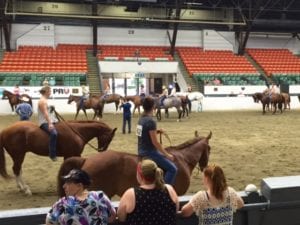 Another great trick for staying warm while riding in the winter is riding bareback. However, whether this is appropriate and safe for you and your horse needs to be evaluated on an individual basis.
Another great trick for staying warm while riding in the winter is riding bareback. However, whether this is appropriate and safe for you and your horse needs to be evaluated on an individual basis.
“Horse’s bodies are equipped to deal with the cold better than humans, and they also generate a lot of heat while they’re working,” Winter says. “So, if your horse is broke enough and you are confident enough to ride around bareback, it is a great way to keep up on riding during the winter months. Just remember to put safety first because horses tend to be a little fresher when it’s cold.”
Don’t Stop Moving
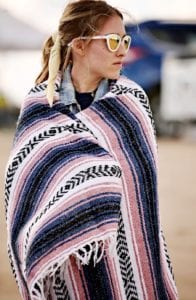 Both human and horse bodies require regular conditioning to remain fit for shows. Often, when the weather is poor, there is a tendency to keep a horse in its stall while the humans stay inside. This can lead to important “show muscle” atrophy and can cause serious health conditions in your horse.
Both human and horse bodies require regular conditioning to remain fit for shows. Often, when the weather is poor, there is a tendency to keep a horse in its stall while the humans stay inside. This can lead to important “show muscle” atrophy and can cause serious health conditions in your horse.
“In a worst-case scenario, when the weather really is not safe for outdoor turnout or truly too cold to ride, we will turn the horses out in the arena and push them around free longing,” Shetler says. “It’s critical to keep your horse moving during the winter for both their physical and digestive fitness.”
Veterinarians warn that the inactivity of confinement may slow intestinal function, which increases the risk of colic. Arthritis and other orthopedic conditions may also worsen when a horse receives little or no exercise.
Winter reminds us that our own bodies require exercise too. Taking the season off to return in the spring can really set us back in our horsemanship, as many of the muscles we use to ride are not utilized in our daily activities.
Winter advises, “If you find yourself unable to ride often due to weather conditions, try to fit in some exercises that will keep your riding muscles strong so you can hop back in the saddle with fewer issues when the weather does improve.”
***
Both our experts remind us that, during the winter, it is critical to ensure your horse is drinking regularly, taking in enough calories to stay warm, and able to move around outside of a stall. All of these are necessary to keep your horse healthy when it’s cold so that, when the weather improves, you and your horse are ready to hit the ground loping.


